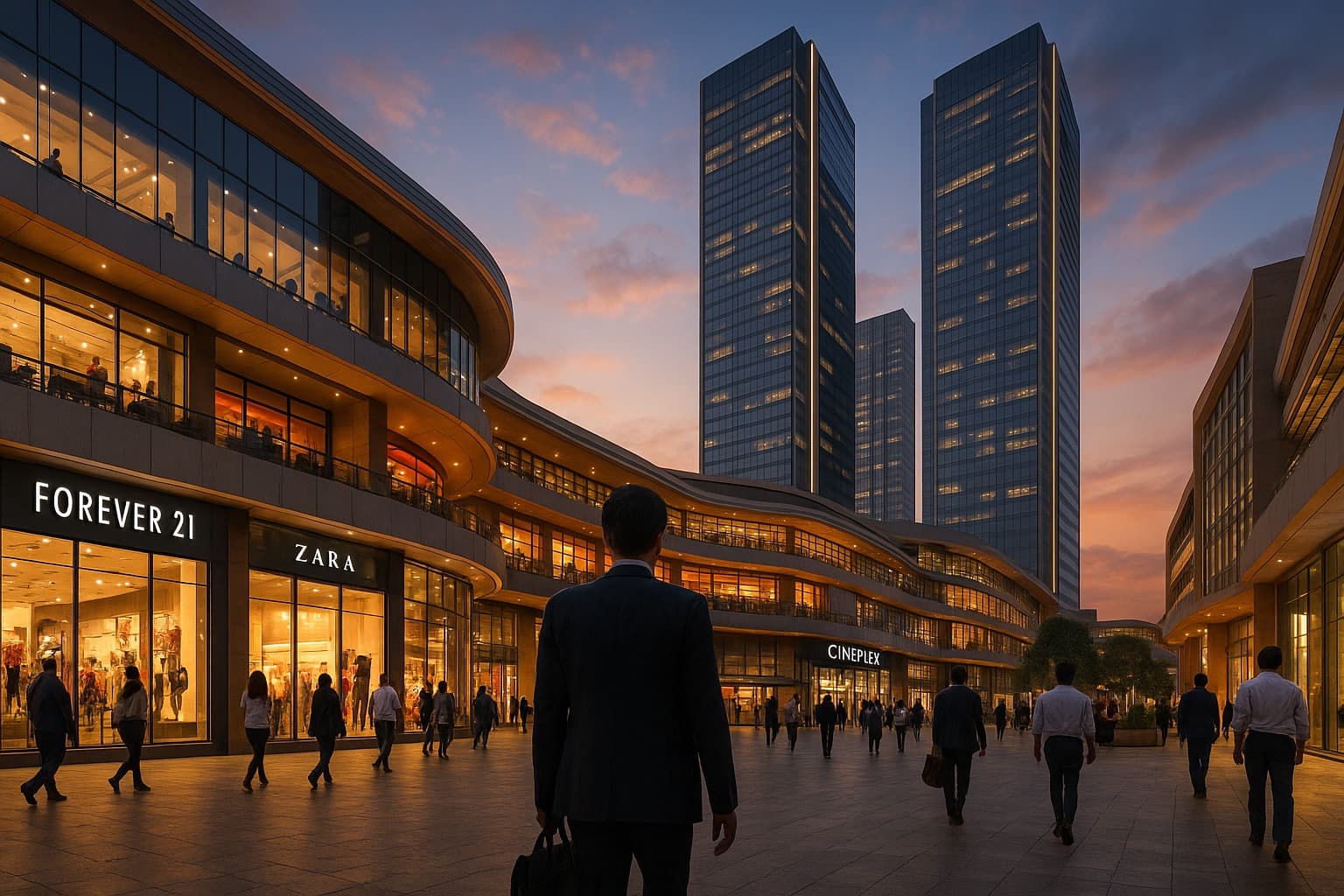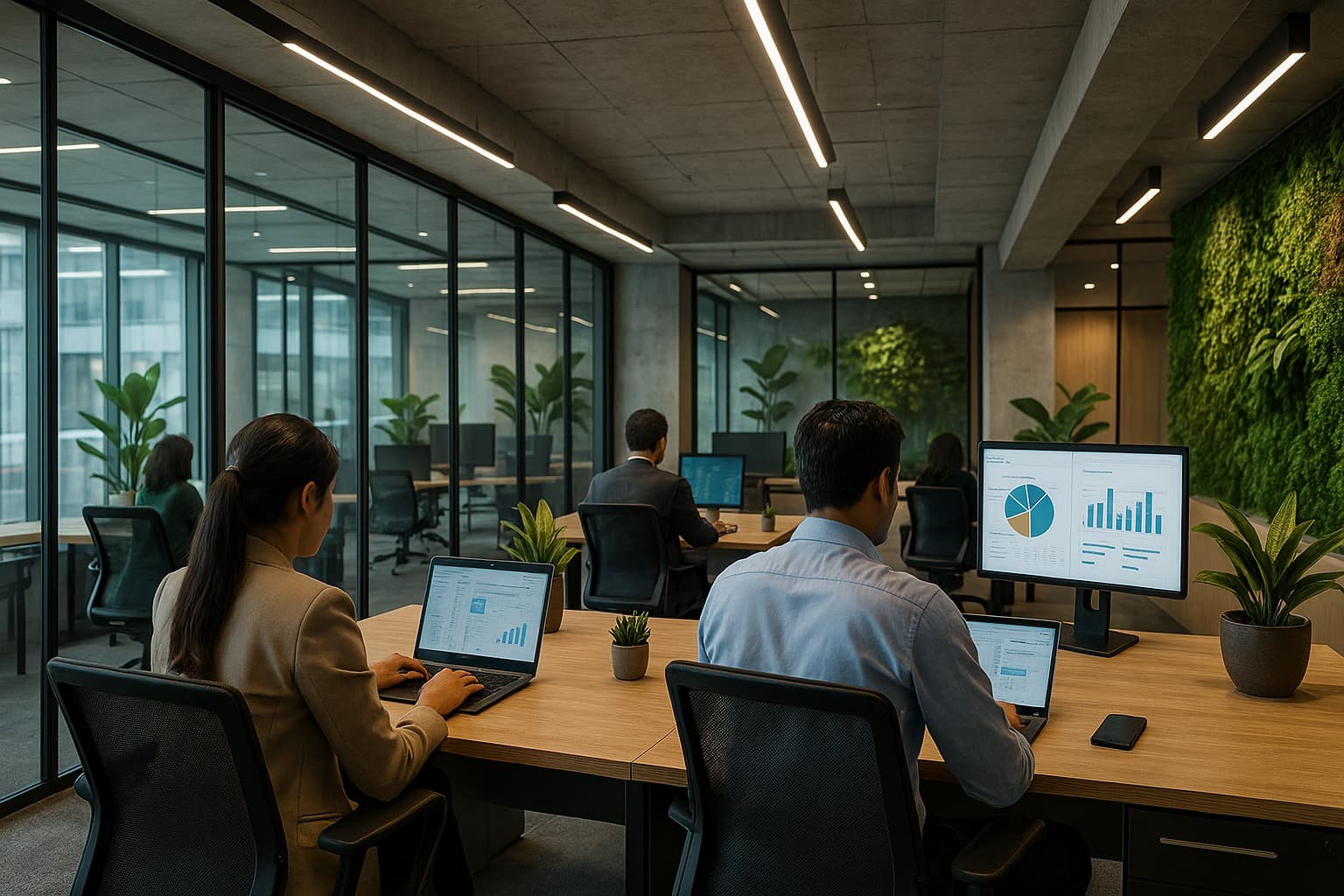India Commercial Real Estate Market Update: Trends and Outlook for 2025
Summary
India's CRE market in 2025 thrives with strong office demand, retail evolution, and mixed-use projects. Investment surges in metros and Tier-2 cities, driven by REITs and tech integration.

Commercial Real Estate Market Update 2025
The commercial real estate (CRE) sector in India is like the heartbeat of urban growth. Every office built, every retail hub launched, tells a story of business optimism and city expansion. As of 2025, commercial property in India is evolving faster than ever. From soaring office space demand in metro cities to the emergence of mixed-use hubs, retail reinvention, and flexible workspaces, the market is brimming with opportunities. Investors, developers, and businesses are all keenly watching trends, making this one of the most exciting phases for India’s commercial real estate landscape.
The Current State of CRE in India
India’s commercial real estate market update 2025 paints a picture of resilience and dynamism. The office segment remains the largest driver of demand, particularly in metros like Mumbai, Bengaluru, Delhi-NCR, Pune, and Hyderabad. Multinational corporations, IT firms, start-ups, and fintech companies are on the lookout for Grade A offices that combine modern amenities, connectivity, and sustainability.
Retail spaces, on the other hand, are adapting to changing consumer behavior. While traditional high streets face challenges, malls and mixed-use complexes offering shopping, dining, and entertainment experiences are thriving. Developers are responding to these shifts, making retail and office projects more integrated, interactive, and attractive to both investors and end-users.
Office Space Dynamics
One of the biggest drivers of CRE in India is office leasing. Metro cities continue to dominate:
Bengaluru: Whitefield, Outer Ring Road, and Electronic City see robust leasing, driven by IT and tech start-ups.
Mumbai: Bandra-Kurla Complex, Lower Parel, and Powai attract finance, media, and multinational firms.
Delhi-NCR: Gurugram and Noida are bustling with new office parks and co-working hubs.
Pune & Hyderabad: Secondary metros are growing as cost-effective alternatives for corporates.
Hybrid work models post-pandemic are influencing leasing patterns. Some companies are downsizing, while others are upgrading to modern, tech-enabled offices with flexible layouts. This dual trend has created demand for both co-working solutions and premium corporate offices, demonstrating how tenant needs are shaping commercial property development in India.
Retail and Mixed-Use Properties
Retail real estate is transforming rapidly. Traditional malls and high streets are giving way to experiential retail, integrating entertainment, F&B, and lifestyle offerings. Consumers are seeking more than just shopping—they want experiences.
Mixed-use projects are gaining momentum, combining retail, office, and residential components. These developments not only diversify revenue streams for developers but also create self-sufficient commercial ecosystems that attract tenants and visitors alike. Cities like Mumbai, Delhi, Bengaluru, and Pune are seeing a surge in these integrated hubs, reflecting the changing face of Indian commercial real estate.

Tier-2 cities are also catching investor attention. Ahmedabad, Kochi, and Lucknow are emerging as new centers for retail and office developments, with affordable leasing costs and improving infrastructure making them attractive alternatives to metros.
Investment Outlook
The CRE investment outlook in India 2025 is strong. Both domestic and international investors are eyeing high-quality office, retail, and mixed-use assets. Real Estate Investment Trusts (REITs) are growing in popularity, offering exposure to commercial assets without direct property ownership. Foreign institutional investors are particularly drawn to prime office and retail properties in metros, signaling confidence in India’s urban growth story.
Key investment trends include:
Premium offices in central business districts (CBDs).
Retail complexes with high footfall and strategic tenant mix.
Warehousing and logistics hubs supporting e-commerce growth.
Mixed-use developments combining commercial and residential offerings.
Government initiatives such as improved ease of doing business, infrastructure development, and smart city projects are further strengthening property values in India’s commercial segment.
Regional Insights
Mumbai remains the top CRE hub, with BKC, Lower Parel, and Powai attracting high-profile tenants.
Delhi-NCR benefits from rapid growth in Gurugram and Noida, with tech parks and co-working solutions seeing strong uptake.
Bengaluru continues as India’s IT nucleus, with Whitefield and Outer Ring Road leading office demand.
Pune and Hyderabad are gaining traction as emerging commercial hubs, supported by metro connectivity and new infrastructure projects.
These regional dynamics highlight the importance of location in commercial property investment. Investors are increasingly considering metro connectivity, business density, and infrastructural support before committing to large projects.
Emerging Trends
Several factors are shaping commercial real estate in India in 2025:
Technology Integration: Smart offices with IoT, AI, and digital infrastructure are becoming essential.
Flexible Workspaces: Co-working and plug-and-play offices offer agility and appeal to modern tenants.
Sustainability: Green buildings and energy-efficient designs are influencing leasing decisions.
Tier-2 City Growth: Cities outside metros are attracting investment due to lower costs and improving connectivity.

Mixed-Use Developments: Integrated residential, retail, and office spaces are creating self-sufficient ecosystems, reducing vacancy risks.
Developers who adapt to these trends will thrive, while traditional, rigid structures may face slower absorption and weaker returns.
Challenges
Despite a positive outlook, the sector faces challenges:
Policy and Regulatory Hurdles: Delays in approvals or zoning issues can impact project timelines.
High Capital Requirements: Premium office and retail projects need significant investment.
Shifting Work Patterns: Hybrid work models may reduce demand for conventional large office spaces.
Competition from Emerging Cities: Tier-2 cities offering cost benefits could divert tenants from metros.
Navigating these challenges requires strategic planning, understanding tenant needs, and adopting innovative construction and leasing models.
Conclusion
The commercial real estate market in India 2025 is vibrant, resilient, and evolving. Office space demand remains strong in metros, while retail and mixed-use developments are redefining urban spaces. Tier-2 cities are emerging as viable alternatives, supported by improved infrastructure and connectivity. Investor confidence is high, aided by supportive government policies, REITs, and foreign capital inflows. Technology, sustainability, and flexible office solutions are now central to CRE strategies. For developers, tenants, and investors, understanding market dynamics, adapting to evolving preferences, and leveraging emerging trends is key to thriving in this growing and exciting sector.
Summary (100 words)
India’s commercial real estate sector is thriving in 2025, driven by strong office space demand, retail transformation, and mixed-use development. Metro cities like Mumbai, Delhi-NCR, Bengaluru, Pune, and Hyderabad lead the market, while tier-2 cities emerge as attractive investment alternatives. Flexible workspaces, smart offices, and sustainable buildings are shaping tenant preferences. REITs and foreign investment are fueling growth, and government policies support infrastructure and ease of doing business. Challenges such as regulatory delays and hybrid work models persist, but overall, the CRE sector remains a resilient, lucrative, and evolving market, offering significant opportunities for developers, investors, and businesses alike.
